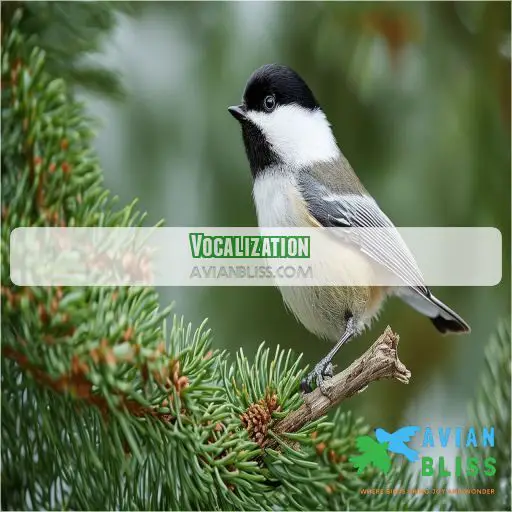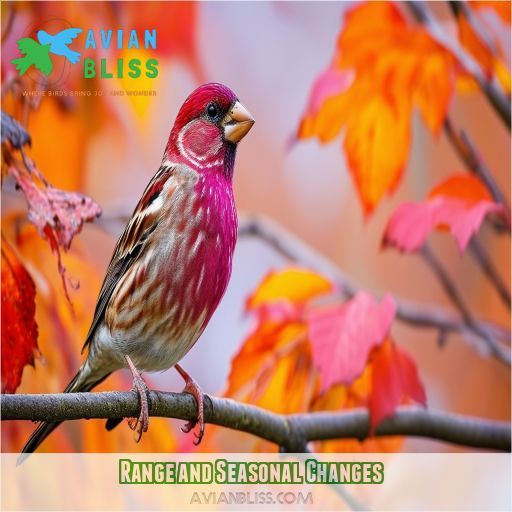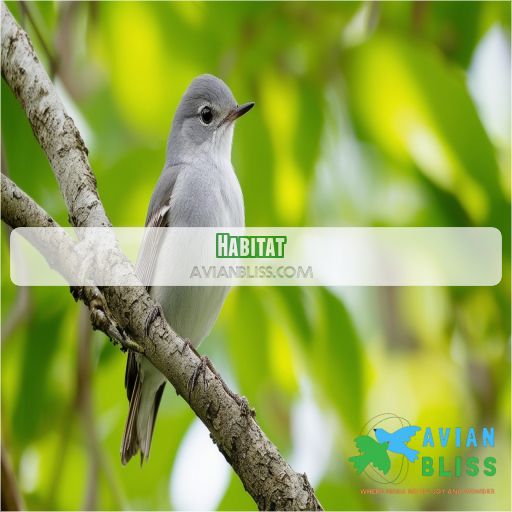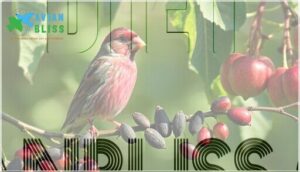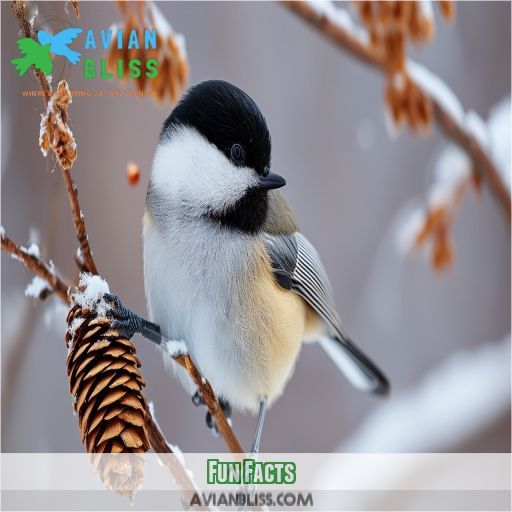This site is supported by our readers. We may earn a commission, at no cost to you, if you purchase through links.
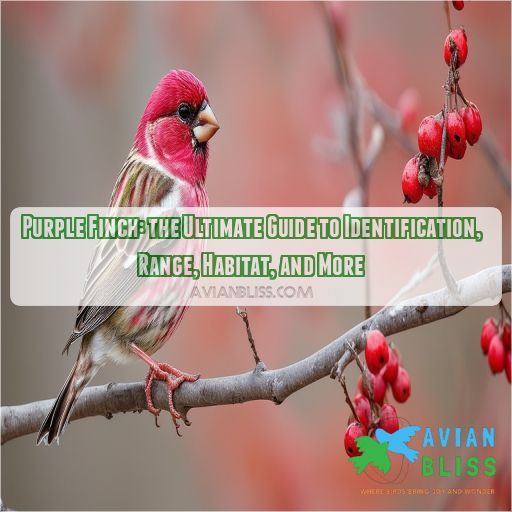 Feast your eyes on the intricate world of the purple finch—an elusive gem you can master identifying with ease.
Feast your eyes on the intricate world of the purple finch—an elusive gem you can master identifying with ease.
This guide equips you with the knowledge to differentiate between sexes and ages, interpret vocalizations, and understand the bird’s erratic migratory patterns.
Discover their habitats, behaviors, and unique breeding practices.
With our detailed exploration, you’ll gain the advantage in recognizing and appreciating these finches, fostering a deeper connection to the natural world.
Table Of Contents
Key Takeaways
- Purple finches are like the chameleons of the bird world, changing their appearance based on age and sex.
- They’re like musical maestros, with intricate songs that incorporate melodies from other species.
- These finches are seed-crushing champions, their hefty beaks making them formidable seed predators.
- They’re like nomadic wanderers, with migration patterns that paint the continent in hues of purple during spring and fall.
Physical Description of Purple Finch
To identify a Purple Finch, note that breeding males have a dull red head and foreparts, while females and juveniles exhibit brown and white patterns with prominent eye marks. Pay attention to their wing shape, which is broader and rounder compared to similar species.
Wing Shape
The wings of the Purple Finch are short and rounded, contributing to its overall compact and chunky appearance. This wing shape is well-suited for the bird’s migration patterns and foraging behavior, allowing for efficient flight and maneuverability in the coniferous forests it inhabits.
Breeding Male
Concerning the breeding male, or Haemorhous purpureus, you’ll notice these distinct features:
- Breeding Plumage: During the breeding season, males sport a striking raspberry-red plumage, with a contrasting white chest and belly.
- Courtship Display: To attract females, males perform an elaborate courtship display, which includes singing and flying maneuvers.
- Nest Site Selection: Males play an active role in choosing the nest site, often preferring coniferous trees.
Female
Females sport a brown and white plumage, with prominent white eye marks, and are crisply patterned. They’re chunkier and shorter-tailed than House Finches.
| Female | Description |
|---|---|
| Plumage | Brown and white |
| Eye Marks | Prominent white |
| Patterning | Crisply patterned |
| Tail | Shorter |
| Size | Chunkier |
Juvenile
Juvenile Purple Finches, Haemorhous mexicanus, exhibit plumage similar to adult females, with brown and white patterns and prominent white eye marks. Here are some key aspects:
- Juvenile plumage: Noticeably, young Purple Finches resemble adult females, with brown and white patterns and distinct white eye marks.
- Age determination: It’s challenging to distinguish juveniles from adult females based on plumage alone.
- Gender differences: Juvenile males may start developing reddish plumage, but it’s less vibrant than adult males. They may not attain full breeding plumage until their second year.
- Growth patterns: Juveniles grow rapidly, leaving the nest within two weeks and reaching independence soon after.
Vocalization
Now that you’ve mastered the physical characteristics of the Purple Finch, let’s embark on the fascinating world of its vocalizations. These birds have a unique way of communicating, and understanding their language will bring you one step closer to becoming a true bird-watching enthusiast.
| Bird Vocalizations | Flight Call | Migration Patterns |
|---|---|---|
| Bird songs are more intricate and longer than calls. Males serenade to defend territories and attract mates. | Flight calls are brief, simple sounds made during flight to maintain flock cohesion. | Migration patterns influence the timing and location of bird vocalizations, with some species singing more frequently during migration. |
Range and Seasonal Changes
Purple finches are widespread across North America, showcasing their adaptability and nomadic nature. During summer, these birds favor the North, East, and Pacific seaboard, while they’re rarely sighted in the Rocky Mountains. As winter approaches, they migrate to Florida, skillfully finding their way south to escape the harsh weather.
Purple finches are markedly absent from the Interior West, which they tend to steer clear of. Their range overlaps with other bird habitats, especially in western Montana, northwestern New Mexico, and Nevada, making these regions hotspots for bird enthusiasts and researchers alike.
Habitat
Now that you know where to find purple finches, let’s discuss their habitat in more detail.
These birds are typically found in coniferous forests, especially in the western regions of Montana, New Mexico, and Nevada, where their habitat overlaps with that of the Cassin’s finch and the house finch.
They can also be spotted in backyards, where they’re attracted to sunflower seed feeders.
Behavior
Purple finches migrate in flocks, mostly during the day, over a considerable period in spring and fall. They compete with House Finches, and their numbers are declining in the east due to this competition.
Breeding and Nesting
Breeding and Nesting Behaviors of Purple Finches
- Clutch Size: Purple Finches typically lay between 3 to 6 eggs, with the most common clutch size being 4-5 eggs.
- Incubation Period: The female Purple Finch incubates the eggs for about 13 days.
- Nestling Development: Both parents play an active role in feeding the nestlings.
- Fledging Age: The young Purple Finches leave the nest approximately two weeks after hatching, marking their journey into independence.
- Parental Care: The dedication of Purple Finch parents to their offspring’s development and well-being underscores their parental care.
Diet
Purple finches are known for their seed-cracking beaks and hefty beaks, which are well-adapted for crushing seeds and extracting nectar. Their diet includes black oil sunflower seeds, thinner sunflower seeds, nectar, fleshy fruits, and other types of seeds.
These birds are true predators of seeds, and their distribution patterns can be influenced by seed availability and preferences.
Regarding bird weight, the Purple Finch’s diet of seeds and nectar provides adequate nutrition to sustain their relatively small size.
Conservation Status
The Purple Finch’s conservation status is a bit of a mixed bag. While their population remains stable, there are some threats to their long-term survival. Here’s the lowdown:
- Threats: The purple finch has faced some challenges over the years, primarily due to competition from other bird species like House Sparrows and House Finches. This competition has led to a decline in their numbers, especially in the Northeast and eastern North America.
- Conservation efforts: There are ongoing efforts to protect and conserve the purple finch. One of the key strategies is providing suitable habitats and food sources, such as coniferous forests and sunflower seeds.
- Status and range: The Purple Finch has a wide range across North America, and their population is currently stable. They’re commonly found in the North, East, and along the Pacific seaboard, with a rare appearance in the Rocky Mountains.
Fun Facts
The Purple Finch, a colorful and melodic bird, has some intriguing attributes that showcase its unique characteristics. Did you know that the oldest recorded Purple Finch lived to be almost 13 years old? That’s quite a lifespan for a small songbird!
These finches are also skilled at crushing seeds and extracting nectar with their beaks and tongues, acting as predators of seeds and distributors of plant life through their fruit consumption. Their hefty beaks can crack even the toughest seeds, making them a formidable force in the seed-eating world.
Additionally, Purple Finches have been known to incorporate the sounds of other species into their songs, creating a unique and diverse repertoire of melodies. Their intelligence and adaptability shine through in this fascinating behavior.
Similar Species
You’ve learned a lot about purple finches, but how do they compare to other finches, like Cassin’s finches and House finches?
Well, all three species favor sunflower seeds and overlap in western Montana to northwestern New Mexico and Nevada. But there are some key differences in their physical characteristics and habitats. Cassin’s finches, for instance, have longer, straighter beaks and noticeable eye rings. They also prefer high-elevation conifer forests, while purple finches are found in a variety of wooded areas and House finches inhabit a wide range of habitats, even houses.
Frequently Asked Questions (FAQs)
What is the typical lifespan of a purple finch?
The average purple finch lives for 2 years, but some reach 6 to 7 years, and the oldest recorded lifespan is 12 years, 8 months.
Do purple finches only eat seeds?
While seeds are a staple of the purple finch’s diet, they also eat berries, fruits, buds, and insects, including grasshoppers, caterpillars, beetles, and mealworms.
Are there any other birds that look like purple finches?
Yes, there are a few birds that share similarities with purple finches. These include house finches, Cassin’s finches, and pine siskins.
Do purple finches always migrate in flocks?
Yes, purple finches migrate in flocks, usually during the day. Migration takes place over a long period in spring and fall.
What is the typical incubation period for their eggs?
The female incubates the eggs for around 12 to 13 days. The young leave the nest about two weeks after hatching.
Conclusion
Through this guide, you’ve gained insight into the intriguing world of the purple finch. From physical traits to unique behaviors, you now possess the tools to identify and appreciate these finches with newfound expertise.


